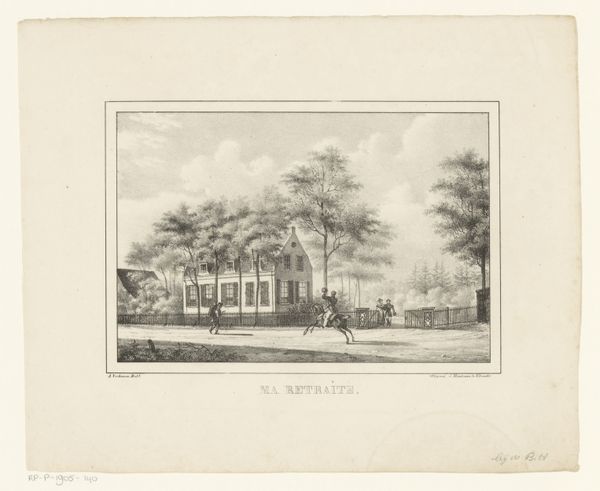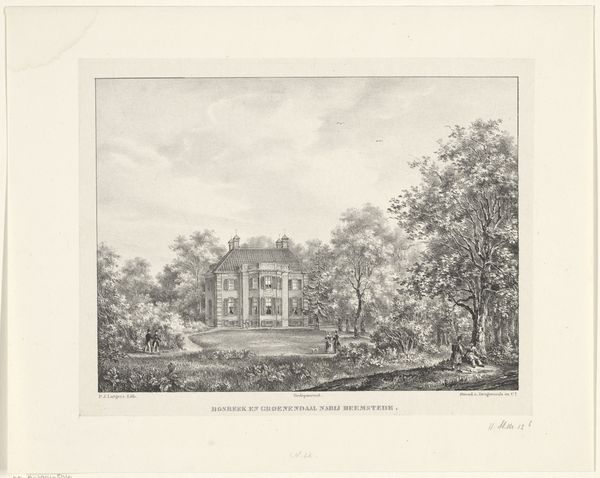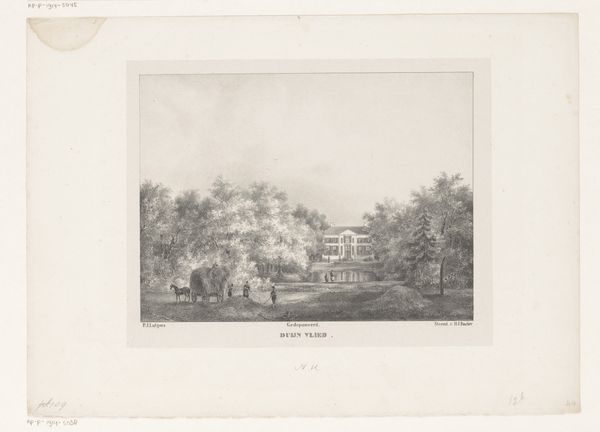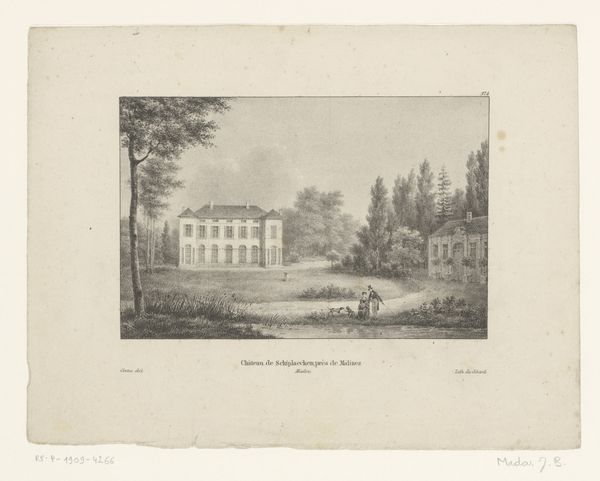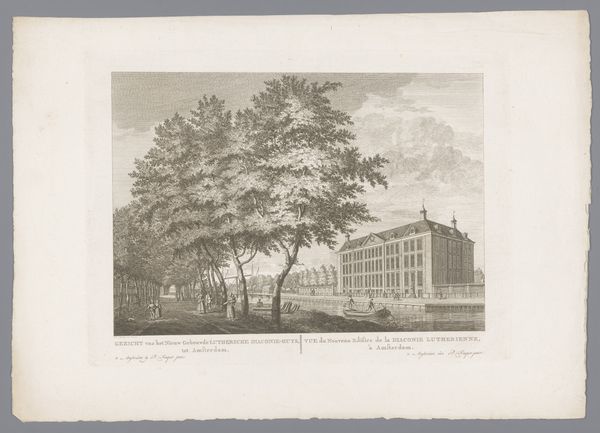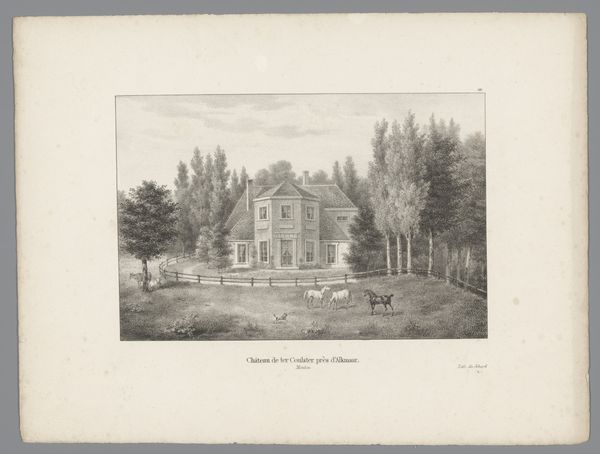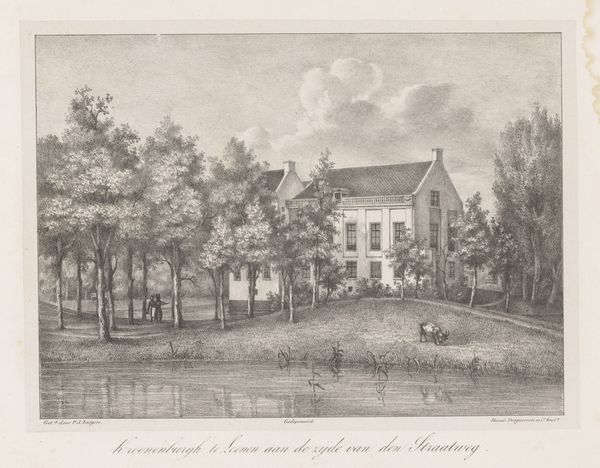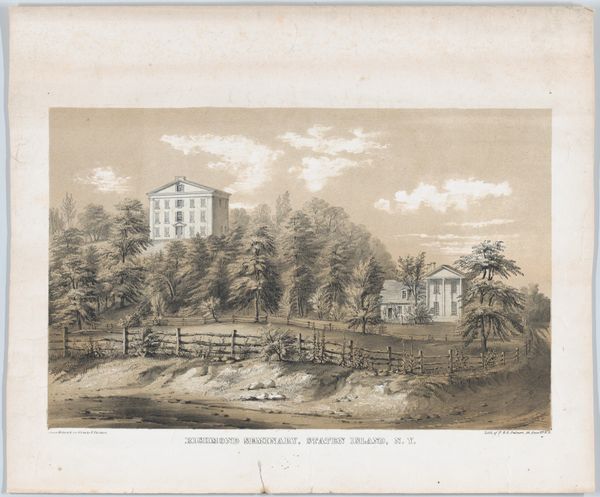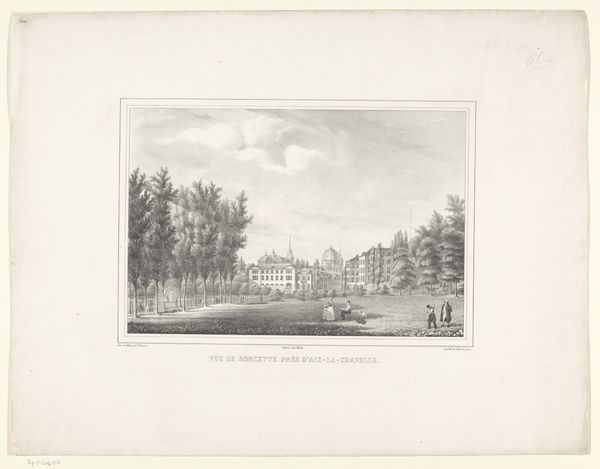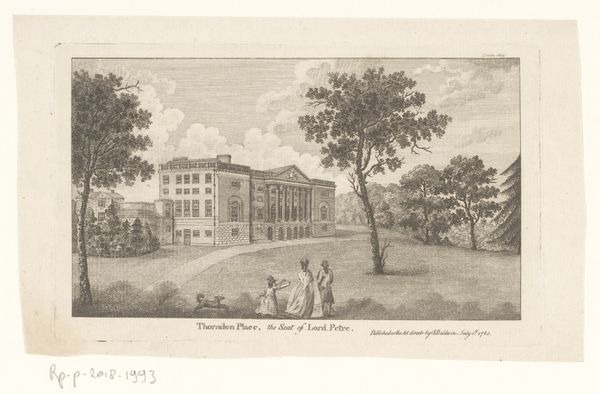
Gezicht op buitenplaats Cromvliet in Rijswijk 1818 - 1876
0:00
0:00
carelchristiaanantonylast
Rijksmuseum
print, engraving
#
neoclacissism
# print
#
old engraving style
#
landscape
#
cityscape
#
genre-painting
#
engraving
Dimensions: height 230 mm, width 320 mm
Copyright: Rijks Museum: Open Domain
Curator: Look at this intricate engraving by Carel Christiaan Antony Last. It’s titled “View of the Cromvliet Estate in Rijswijk” and was likely created sometime between 1818 and 1876. What’s your initial read on it? Editor: Well, the immediate feel is one of placid order. The neoclassical architecture framed by those delicately rendered trees...it's all so controlled, so… composed. Almost theatrical. Do you get a sense of artificiality? Curator: Artificial in the sense that nature itself is carefully arranged to complement human structures, certainly. It echoes that neoclassical sensibility, where everything finds its rational place, its purpose. It reminds me a bit of stage design; the bridge acting as the stage, the figures posed as actors. Editor: Exactly! And the etching style – with its very precise lines – emphasizes that artificiality. But it’s not just about the visual perfection, it goes back further. Isn't the symbolism suggestive? The estate could represent something stable in contrast with chaotic modern times, almost trying to say 'This is a stable world view!'. Curator: The artist is creating, if you will, a kind of architectural memory. He offers his interpretation of this location and his vision for order and clarity for the culture he is representing. The ducks peacefully floating on the water mirror the people socializing on the bridge...every element adds to this vision of balanced contentment. But who exactly would have the money and social position to buy or visit this sort of landscape? Editor: Indeed. This kind of idealized setting sends a particular message. It silently promotes a certain idea of how the wealthy wanted to be perceived; serene, cultured, at peace within their carefully curated surroundings. Curator: Almost like branding of its time. What an evocative piece; its quiet precision holds so much about that period. It’s fascinating. Editor: Absolutely, it invites contemplation of an era through this tiny yet resonant world captured in ink.
Comments
No comments
Be the first to comment and join the conversation on the ultimate creative platform.
